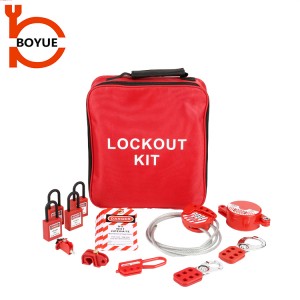In any workplace where machinery and equipment are used, it is crucial to have proper hazardous energy control procedures in place to protect employees from potential accidents. Lockout/tagout (LOTO) procedures are a widely recognized method for ensuring the safety of workers when servicing or maintaining equipment. This article will outline the key steps and best practices for implementing effective LOTO procedures in the workplace.
1. Understanding the Importance of Lockout/Tagout
Preventing workplace accidents is a top priority for any organization. LOTO procedures are designed to control hazardous energy, such as electrical, mechanical, hydraulic, and thermal energy, during the maintenance of equipment. Without these measures, employees risk serious injuries or even fatalities caused by unexpected energy release or machine startups.
2. Key Components of a LOTO Program
A successful LOTO program includes several critical elements:
- Energy Control Procedures: Written guidelines detailing how to safely isolate and control hazardous energy sources.
- Employee Training: Comprehensive training to ensure workers understand LOTO protocols and their responsibilities.
- Authorized Personnel: Designated employees with specific training to perform LOTO tasks.
3. Step-by-Step Guide to LOTO Implementation
Step 1: Prepare for Shutdown
Identify all energy sources connected to the equipment and understand how they operate. This step is crucial to ensure no energy is accidentally left active.
Step 2: Notify Affected Employees
Inform all employees working in the area about the upcoming lockout/tagout process. Communication helps prevent misunderstandings and ensures everyone’s safety.
Step 3: Isolate Energy Sources
Turn off and isolate all energy sources connected to the equipment. Use appropriate methods, such as closing valves or disconnecting power supplies.
Step 4: Apply Lockout Devices
Attach lockout devices to the energy isolation points to physically prevent reactivation. Each lock should be unique to the user and come with a durable tag.
Step 5: Release Stored Energy
Release or restrain any stored energy, such as compressed air or hydraulic pressure, that could pose a risk during maintenance.
Step 6: Verify Energy Isolation
Before beginning work, verify that all energy sources are completely de-energized. Use testing equipment if necessary.
Step 7: Perform Maintenance Safely
With all energy sources securely controlled, proceed with the necessary maintenance or servicing tasks.
4. Best Practices for Effective LOTO
- Regular Inspections: Conduct routine checks to ensure LOTO procedures are followed correctly.
- Keep Records: Document all lockout/tagout activities for accountability and compliance.
- Foster a Safety Culture: Encourage employees to prioritize safety and report any potential hazards.
5. Conclusion
Implementing effective lockout/tagout procedures is essential for maintaining a safe workplace. By controlling hazardous energy and following best practices, organizations can protect their employees and reduce the risk of accidents.
Post time: Feb-10-2025

